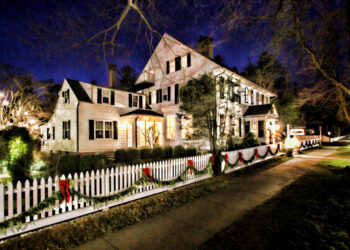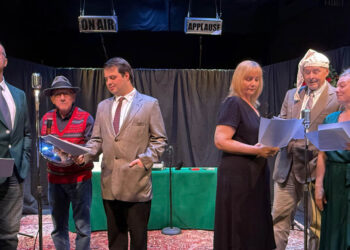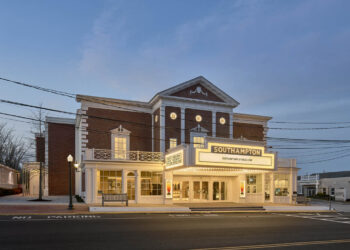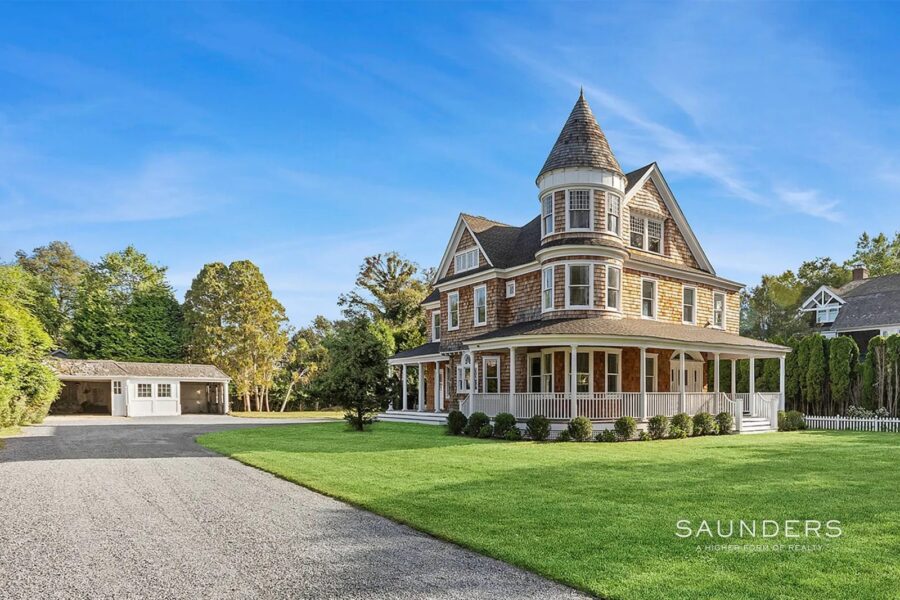 30 Huntting Lane, East Hampton, NY 11937
30 Huntting Lane, East Hampton, NY 11937
Saunders Exclusive: $7,250,000
View Listing
At the bend of Huntting Lane in East Hampton Village, a remarkably restored Queen Anne Victorian—now offered for sale—stands as impressive as it is improbable.
Built in 1896 by James Edward Huntting and held by his family for over a century, the estate is a masterclass in American craftsmanship—built to endure and beautifully restored. Graceful gables, revived millwork, and preserved character bridge Gilded Age ambition, Hamptons high society, and highlight the enduring power of community in the Village.
Here, history feels alive—not in signs of wear, but rather in the lack thereof, a testament to the care that has returned the home to its original glory. Every detail has been honored, presenting a rare historic gem ready for its next chapter.
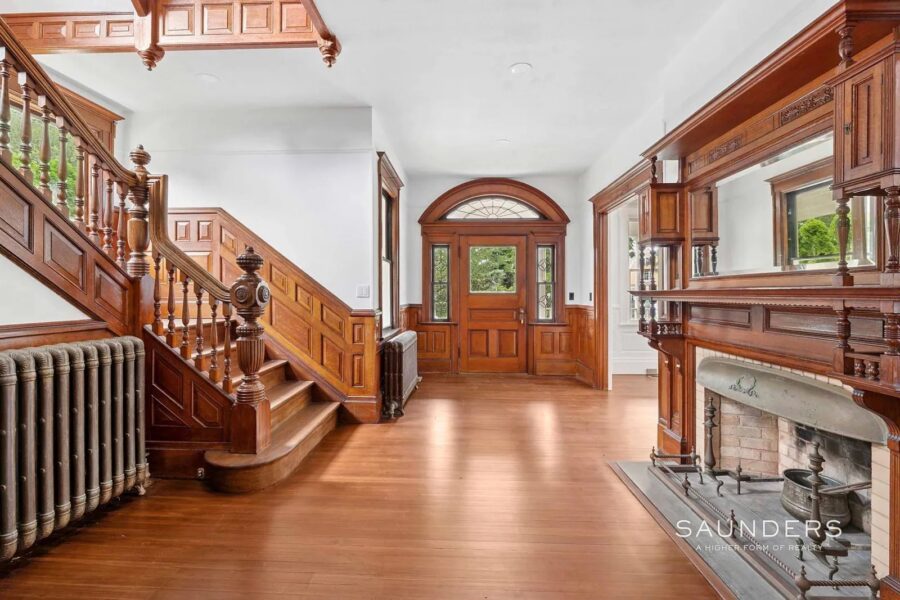
THE HUNTTING LEGACY
Any Hamptons historian knows the Huntting name. Their story in East Hampton dates back to 1696, when Nathaniel Huntting became the second pastor of the First Presbyterian Church and built a stately saltbox home, which would be transformed into the Huntting Inn.
Generations later, the family’s influence shifted from the pulpit to the building trades. As president of the East Hampton Lumber & Coal Company—once located where Riverhead Building Supply now stands—James Edward Huntting left an indelible mark on the Village’s streetscape. The company supplied the materials that shaped East Hampton’s evolution into a coveted summer enclave, building not just homes but a distinctive architectural character that still defines Huntting Lane today.
If the old Lumber & Coal Company were still around, Huntting Lane would be its finest advertisement.
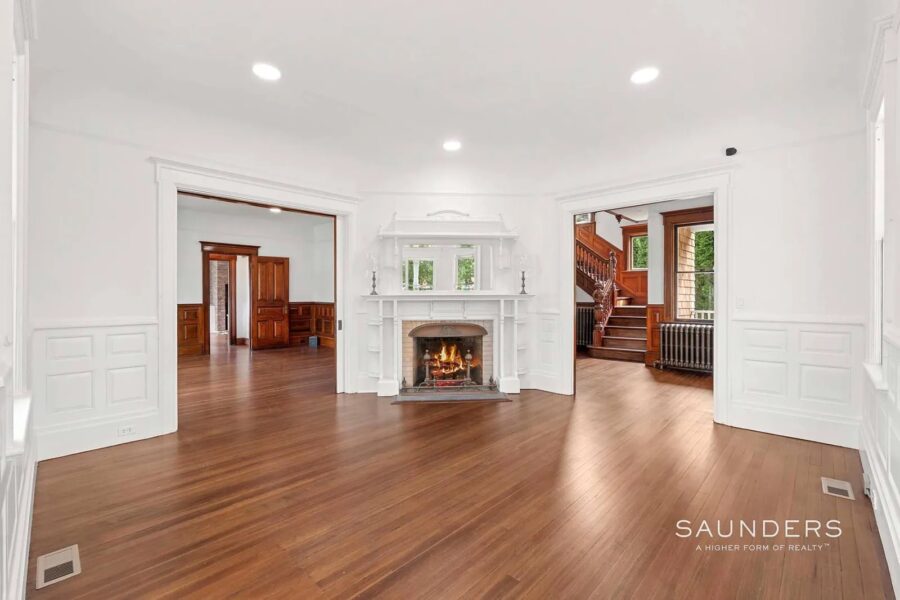
A STUBBORN AUTHENTICITY
30 Huntting Lane home holds over a century of stories—its legacy woven into the very fabric of East Hampton—and Ed preserved it in his own way. The property remained untouched by modern trends, a kind of time capsule, stubborn in its authenticity.
By the late 1990s, the once-stately home had grown quiet. Edward Tyler Huntting Jr.—the final member of the Huntting family to reside in the house his grandfather built—lived a life of seclusion behind its distinctive gables. A former tennis player at the Maidstone Club and seasoned salesman who had crisscrossed the country, Ed had returned to his childhood home and remained there, largely unseen, as the rhythms of village life moved on around him.
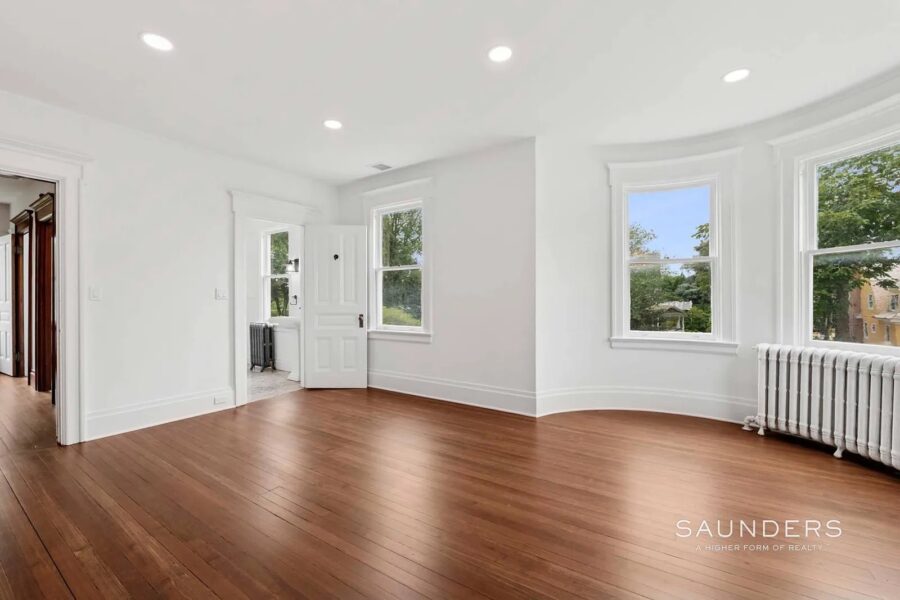
NEW STEWARDSHIP
The story of how 30 Huntting Lane passed to Tom Strong, a Hamptons local whose family dates back generations, occasional landscaper, and member of the East Hampton Police Department, is as beautiful and rare as the now-restored home itself.
A chance encounter between Tom Strong and Ed Huntting marked the beginning of a friendship that would endure for years.
In the early 2000s, while running a small landscaping business, Strong passed the weather-worn Queen Anne on Huntting Lane and saw an older man struggling to cut knee-high grass with a push-reel mower. He slowed, ready to offer help, but the man—frustrated—waved him off. Strong rode on, and the memory of that brief encounter soon faded.
More than a decade later, in 2017, Strong was serving full-time with the East Hampton Town Police Department and still mowing a few lawns on the side. An inquiry came in from a man named Ed Huntting at 30 Huntting Lane—asking for a price to cut the lawn, explaining that he’d chosen Strong because he recognized the local surname. When Strong arrived, he realized immediately this was the same gentleman from years earlier, now in his eighties and living alone in the once-stately house that had grown further into disrepair.
The meeting marked the beginning of an unlikely friendship. Strong offered to maintain the lawn for a modest fee—more as a neighborly gesture than a business transaction—and soon noticed that Huntting lingered outside to talk each time he came by. Those brief chats, at first a delay to Strong’s schedule, became a standing ritual: stories of Huntting’s Army years, his time on Lombard Street in San Francisco, his recollections of the Village’s past.
As the seasons passed, Strong’s role shifted quietly from landscaper to caretaker. He stocked the refrigerator, carried out bags of old newspapers, made repairs, bought clothes and vitamins—small acts of kindness that grew as Huntting’s health declined. Their connection deepened with each errand and each story shared on the porch or by the mower.
As Huntting’s health declined in 2023, Strong visited him daily with newspapers and conversation. In one of their last exchanges, Huntting clasped his hand and whispered, “I’m very fortunate that I was able to know you, Tom.” He passed away in 2024 at 89, leaving the house—and its legacy—to the man who had once been a passerby on a mower, sealing a bond that preserved not just a home but a chapter of East Hampton’s history.
What started as lawn care evolved into neighborly kindness, ultimately leading to friendship and connection that had long eluded the late Ed Huntting. Strong’s indelible impact on the property has come full circle, as the home is restored and ready for its next chapter to be written.
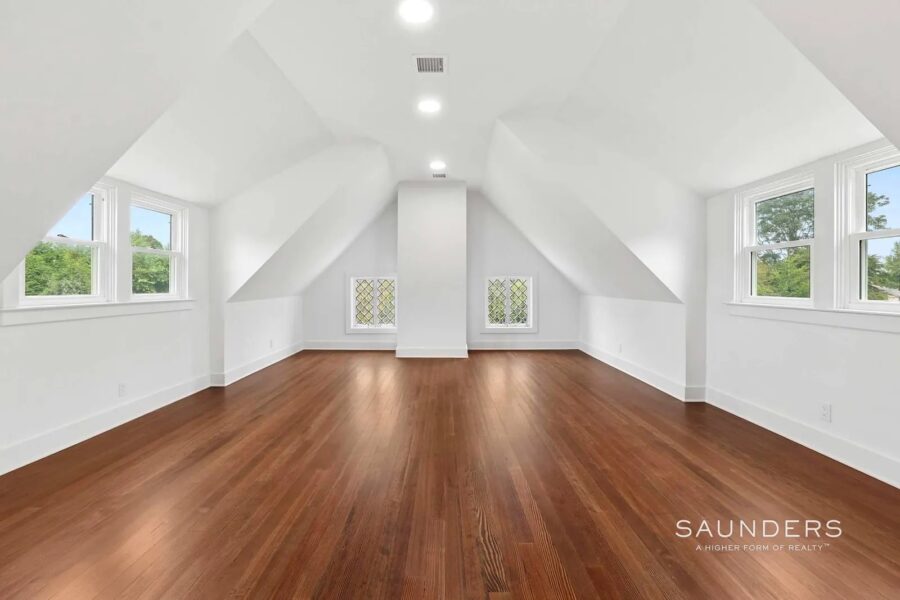
RESTORATION
What Mr. Strong has accomplished at 30 Huntting Lane is an iconic expression of the home’s original architectural quality—replicating the vision first enjoyed by James Edward Huntting in 1896, now elevated for luxury living today. The work began not just with craftsmanship, but with deep respect for the home’s historic character.
Inside, the tall ceilings and brilliant natural light now play against new Douglas fir floors, original wainscoting, and finely refinished millwork, bringing warmth and depth back to every room. All 48 antique windows were painstakingly restored—re-weather-stripped, refitted with custom hand-blown glass panes, and balanced with renewed sash weights and ropes—allowing the home’s original rhythm of light and air to function as intended.
Other period details were preserved while modern comforts were seamlessly introduced. The kitchen chimney was rebuilt brick by brick and now anchors a 36-inch Viking six-burner gas range. The third floor—once a neglected attic—has been fully refinished, and the baths have been reimagined with marble-tiled floors and fixtures that honor the home’s historic proportions while adding modern sophistication.
The exterior received equal care. The formerly enclosed front porch was rebuilt in custom mahogany to match its 1896 design, while a matching rear porch with recessed lighting now opens to the gardens. Fresh cedar-shingled siding wraps the home, the turret roof has been re-shingled with CCA-treated shakes, and it is crowned by a custom copper finial. The entire façade was sanded, repainted, and brought back to its stately presence.
Every improvement—from the authentic millwork to the discreet new systems—was chosen to ensure that 30 Huntting Lane lives comfortably in the present without surrendering any of its 19th-century grace. Even if you are not an avid enthusiast for Queen Anne Victorian style, the home retains all the hallmarks of Pre-War architecture in harmony with contemporary luxury lifestyles.
The effort, attention, and intention are evident in every inch of the house. His passion is unmistakable, woven into the soul of the home and revealed in each carefully restored detail. Like James Edward Huntting, who built the original home for his family, Tom Strong’s restoration was deeply personal—a duty of care honored not only to the man he befriended and his home, but to the architectural legacy and character of East Hampton Village.
Beyond the property itself, Huntting Lane remains one of, if not the most, architecturally harmonious streets in East Hampton Village. The Huntting family’s influence endures—several of the neighboring homes were also built by them and still stand today.
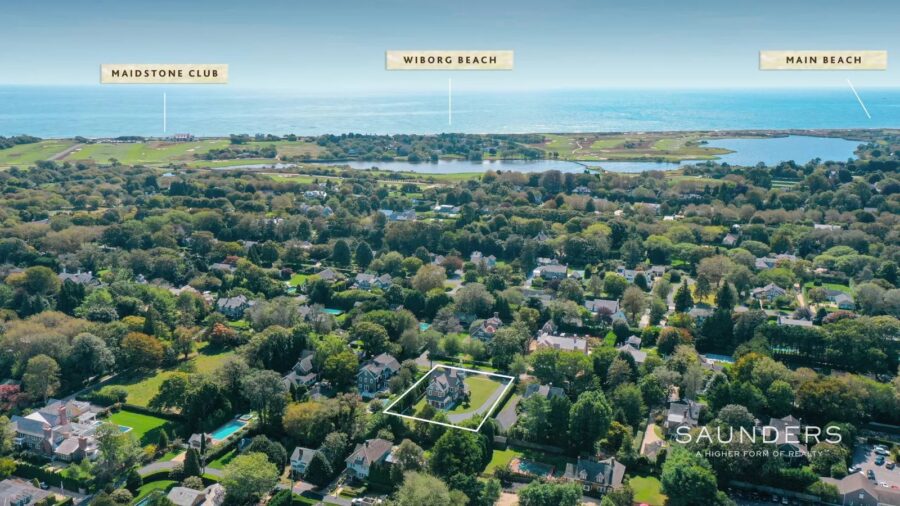
HAMPTONS SOCIETY
The provenance of Hamptons Society is deeply ingrained in this home. During the restoration, Mr. Strong uncovered a trove of historic photographs on the now-refinished third floor—most notably an image of Hilda Huntting seated beside Little Edie Beale of Grey Gardens fame. The photograph, as highlighted in The East Hampton Star, is a rare glimpse into a gilded social circle that once defined the East End.
In the photo, Hilda Huntting sits poised and elegant, her wide-brimmed hat casting a graceful shadow across her face, while beside her, the unmistakable Little Edie Beale exudes the eccentric charm that would later become legend. Both women are dressed for a summer luncheon in East Hampton—capturing a moment of old-world glamour that reflects the Huntting family’s place among the Bouviers, Beales, and other names synonymous with East Hampton’s storied social scene.
Much like the Bouviers’ iconic Georgica Estate, 30 Huntting Lane has been revived and revitalized, ready once again to host its next chapter in Village life. The discovery of these photographs underscores the home’s unique role not only as an architectural treasure but as a living witness to the genteel gatherings and interwoven histories of America’s prominent families.
Today, as you pass along Huntting Lane, it’s easy to imagine that bygone era—distinguished families in wide-brimmed hats making their way to the beach or returning from a luncheon on Main Street, the lane itself still echoing with the charm of East Hampton’s most refined summers.
EXTERIOR POTENTIAL
The rear grounds add another layer of possibility, which includes room for a pool and a rare pre-existing nonconforming structure. For buyers seeking a balance of architectural provenance and modern outdoor living, 30 Huntting Lane remains both a remarkable restoration and a canvas for future vision.
Where history had once paused, the story now moves forward—gracefully revived, thoughtfully reimagined, and ready to inspire for generations to come. Despite Ed’s reluctance to engage with the community, the beautifully restored home speaks in his stead. Standing proud and whole, ready at last to open its doors again.
For more information about 30 Huntting Lane in East Hampton Village, reach out to Romaine Gordon.

ROMAINE GORDON
Licensed Real Estate Salesperson As Romaine Michele Gordon
[email protected]
Cell: (516) 317-1593
For more info, click here.


